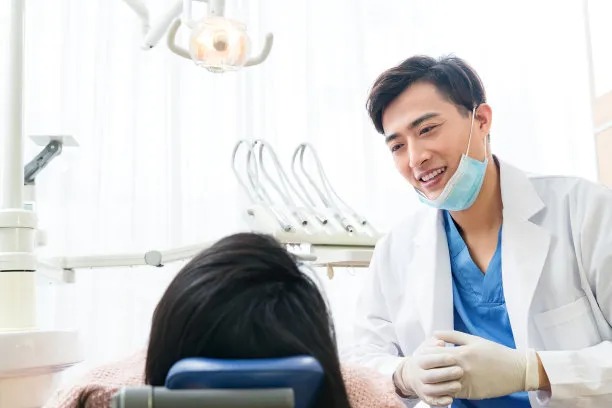The Essential Steps and Aftercare Tips for Successfully Extracting a Tooth at the Dentists Office
Summary: Extracting a tooth is a common dental procedure that requires careful planning and execution by both dentists and patients. This article provides a comprehensive overview of the essential steps involved in safely extracting a tooth at the dentists office, along with important aftercare tips for optimal recovery. It discusses pre-extraction preparations, the extraction procedure itself, post-extraction care, and potential complications that may arise, all aimed at ensuring a smooth experience for patients. With this in-depth guide, individuals will feel more informed and less anxious about the tooth extraction process.
1. Pre-Extraction Preparations for Patients

Before a tooth extraction, proper preparation is essential for both the dentist and the patient. The first step involves a thorough examination where the dentist assesses the patients dental and medical history. This includes identifying any underlying health conditions, current medications, and allergies that may affect the procedure.
Additionally, patients may be required to undergo imaging tests, such as X-rays, to evaluate the position of the tooth and surrounding structures. This visual representation helps the dentist formulate a strategic approach for the extraction procedure.
Patients should also discuss their concerns and the sedation options available with their dentist. Understanding the various types of anesthesia can alleviate anxiety and help in making informed choices about the procedure.
2. The Tooth Extraction Procedure Explained
The tooth extraction procedure typically begins with the dentist administering anesthesia to ensure the patient is comfortable and pain-free during the operation. The type of anesthesia used—local, sedation, or general—depends on the complexity of the extraction and patient preferences.
Once the anesthesia takes effect, the dentist carefully loosens the tooth from its socket using specialized instruments. The goal is to minimize trauma to the surrounding tissues, making the extraction smoother. In some cases, the tooth may be impacted, requiring additional techniques for safe removal.
After the tooth is extracted, the dentist will clean the extraction site and, if necessary, place sutures to promote healing. The dentist will then provide instructions for aftercare, ensuring the patient understands the importance of following these guidelines to prevent complications.
3. Post-Extraction Care Instructions
After the extraction, effective aftercare is crucial for a healthy recovery. Patients should follow the dentists instructions closely, starting with controlling bleeding by biting down on a gauze pad for around 30-45 minutes. It’s essential to avoid spitting or rinsing aggressively, as this might dislodge the blood clot forming at the extraction site.
In the first 24 hours post-extraction, patients should stick to a soft food diet and drink plenty of fluids while avoiding hot beverages and alcohol. This helps prevent irritation of the extraction site and reduces the risk of complications.
Moreover, patients should monitor for any signs of infection, such as increased swelling, persistent pain, or fever. If any of these symptoms occur, contacting the dentist promptly is advisable. Pain relief can usually be managed with over-the-counter medications, as prescribed by the dentist.
4. Understanding Possible Complications
Despite careful planning and execution, tooth extraction can sometimes lead to complications. One common issue is dry socket, a painful condition that occurs when the blood clot at the extraction site becomes dislodged or dissolves before healing is complete. Patients experiencing severe pain beyond the initial recovery phase should consult their dentist.
Infection is another potential complication that can arise if bacteria enter the extraction site. Maintaining proper oral hygiene post-extraction, including gentle brushing and avoiding the site, is crucial to mitigate this risk.
Lastly, some patients may experience swelling, which is a normal reaction following dental procedures. However, significant or prolonged swelling may indicate a problem. Thus, observing the recovery process closely and reaching out for any unusual symptoms is essential for successful healing.
Summary:
Successfully extracting a tooth at the dentists office involves a series of critical steps, from pre-extraction preparations to post-extraction care. Each stage plays a significant role in ensuring patient comfort and minimizing complications. By understanding these essential aspects and following aftercare instructions, patients can significantly enhance their recovery experience.
This article is compiled by Vickong Dental and the content is for reference only.



